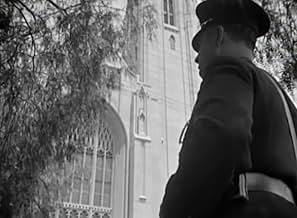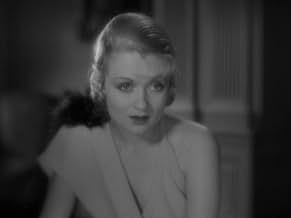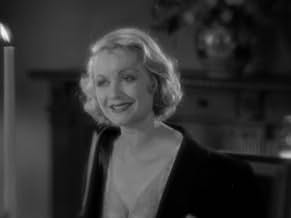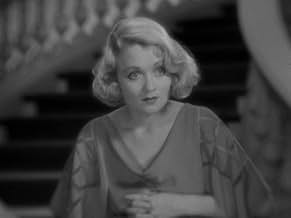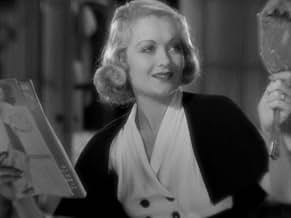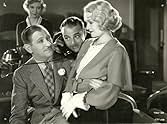IMDb-BEWERTUNG
7,0/10
2856
IHRE BEWERTUNG
Füge eine Handlung in deiner Sprache hinzuThe career of a waitress takes off when she meets an amiable drunken Hollywood director.The career of a waitress takes off when she meets an amiable drunken Hollywood director.The career of a waitress takes off when she meets an amiable drunken Hollywood director.
- Für 1 Oscar nominiert
- 3 Gewinne & 1 Nominierung insgesamt
George Reed
- Undetermined Secondary Role
- (Gelöschte Szenen)
Alice Adair
- Undetermined Secondary Role
- (Nicht genannt)
Eddie 'Rochester' Anderson
- James - Max's Butler
- (Nicht genannt)
Sam Armstrong
- Undetermined Secondary Role
- (Nicht genannt)
Zeena Baer
- Secretary to Julius Saxe
- (Nicht genannt)
King Baggot
- Department Head
- (Nicht genannt)
Gerald Barry
- John Reed - an Actor
- (Nicht genannt)
Floyd Bell
- Undetermined Secondary Role
- (Nicht genannt)
Veda Buckland
- Nana - Jackie's Nursemaid
- (Nicht genannt)
Nicholas Caruso
- Chef at Brown Derby
- (Nicht genannt)
Lita Chevret
- Actress Filming on Movie Set
- (Nicht genannt)
Empfohlene Bewertungen
Another film that deserves a wider viewership and a DVD release, "What Price Hollywood?" looks at the toll Hollywood takes on the people who make it possible.
Adela Rogers St John wrote the Oscar-nominated story of a fading genius of a director, destroyed by drink, who launches one last discovery into the world. Lowell Sherman, himself both a director and an alcoholic, played the sad role that had been modeled, in part, on his own life. (Sherman's brother-in-law, John Barrymore, was also a model, as was the silent film director Marshall Neilan.) The divinely beautiful Constance Bennett plays the ambitious Brown Derby waitress who grabs her chance. Neil Hamilton, paired to great effect with Bennett that same year in "Two Against the World," plays the east-coast polo-playing millionaire who captures Bennett's heart without ever understanding her world.
George Cukor directed the film for RKO, and already the seeds of his directorial genius can be seen. Wonderful montages and double exposures chart Bennett's rise and fall as "America's Pal," and I've rarely seen anything as moving as the way Cukor presented Sherman's death scene, using quick shot editing, exaggerated sound effects and a slow motion shot. As startling as it looks today, one can only imagine the reaction it must have caused over 70 years earlier, before audiences had become accustomed to such techniques.
While the romantic leads are solid--Bennett, as always, especially so--and Gregory Ratoff is mesmerizing as the producer, hats must be doffed to Lowell Sherman for his Oscar-calibre performance. The slide from charming drunk to dissolute bum is presented warts and all, and a late scene in which the director examines his drink-ravaged face in the mirror is powerful indeed. It's hard to imagine what it must have been like for Sherman to play such a role and it was, in fact, one of the last roles he took for the screen, before concentrating on directing--then dying two years later of pneumonia.
When David O. Selznick made "A Star is Born" for United Artists five years later, four years after leaving RKO, the RKO lawyers prepared a point-by-point comparison of the stories, recommending a plagiarism suit--which was never filed. The later movie never credited Adela Rogers St John or any of the source material of "What Price Hollywood?" for its own screenplay, which was written by Dorothy Parker from, supposedly, an idea of Selznick's.
"What Price Hollywood?" is a great source for behind-the-scenes tidbits--Cukor fills the screen with images of on-set action (or inaction), with various crew waiting about as they watch the film-in-a-film action being filmed. This movie works as history and as innovation, but it also works on the most important level, as a well-told story.
Adela Rogers St John wrote the Oscar-nominated story of a fading genius of a director, destroyed by drink, who launches one last discovery into the world. Lowell Sherman, himself both a director and an alcoholic, played the sad role that had been modeled, in part, on his own life. (Sherman's brother-in-law, John Barrymore, was also a model, as was the silent film director Marshall Neilan.) The divinely beautiful Constance Bennett plays the ambitious Brown Derby waitress who grabs her chance. Neil Hamilton, paired to great effect with Bennett that same year in "Two Against the World," plays the east-coast polo-playing millionaire who captures Bennett's heart without ever understanding her world.
George Cukor directed the film for RKO, and already the seeds of his directorial genius can be seen. Wonderful montages and double exposures chart Bennett's rise and fall as "America's Pal," and I've rarely seen anything as moving as the way Cukor presented Sherman's death scene, using quick shot editing, exaggerated sound effects and a slow motion shot. As startling as it looks today, one can only imagine the reaction it must have caused over 70 years earlier, before audiences had become accustomed to such techniques.
While the romantic leads are solid--Bennett, as always, especially so--and Gregory Ratoff is mesmerizing as the producer, hats must be doffed to Lowell Sherman for his Oscar-calibre performance. The slide from charming drunk to dissolute bum is presented warts and all, and a late scene in which the director examines his drink-ravaged face in the mirror is powerful indeed. It's hard to imagine what it must have been like for Sherman to play such a role and it was, in fact, one of the last roles he took for the screen, before concentrating on directing--then dying two years later of pneumonia.
When David O. Selznick made "A Star is Born" for United Artists five years later, four years after leaving RKO, the RKO lawyers prepared a point-by-point comparison of the stories, recommending a plagiarism suit--which was never filed. The later movie never credited Adela Rogers St John or any of the source material of "What Price Hollywood?" for its own screenplay, which was written by Dorothy Parker from, supposedly, an idea of Selznick's.
"What Price Hollywood?" is a great source for behind-the-scenes tidbits--Cukor fills the screen with images of on-set action (or inaction), with various crew waiting about as they watch the film-in-a-film action being filmed. This movie works as history and as innovation, but it also works on the most important level, as a well-told story.
"What Price Hollywood?" is one of my favorite films of the 1930s. With loads of drama, glamour to spare, and some romance too, this movie is one of the best behind-the-scenes looks at the old Hollywood studio system that was ever made. Constance Bennett, looking her radiant best, plays the lead role with finesse. Lowell Sherman also turns in a powerful performance as a washed-up director. This movie was the basis for "A Star is Born." All in all, one great film.
Alcoholic director Max Carey (Lowell Sherman) discovers waitress Mary Evans (Constance Bennett). She becomes a big star and marries handsome Lonny Borden (Neil Hamilton)...but Carey's alcoholism starts to kill him and Lonny can't deal with his wife's stardom....
Very predictable but good. This movie moves VERY quickly; is well-directed by George Cukor; has some sharp pre-Code dialogue and has a good script that gives an interesting look at Hollywood in the 1930s. The church sequence especially is fascinating. It gets a little overly silly at the end but it still works.
Bennett is just great--beautiful and believable; Sherman was good also; Hamilton is just so-so but he's unbelievably handsome so that helps. Gregory Ratoff also gets some laughs as a VERY excitable studio head.
This was (pretty obviously) the inspiration for the later "A Star Is Born" movies but stands on its own merit. I give it an 8.
Very predictable but good. This movie moves VERY quickly; is well-directed by George Cukor; has some sharp pre-Code dialogue and has a good script that gives an interesting look at Hollywood in the 1930s. The church sequence especially is fascinating. It gets a little overly silly at the end but it still works.
Bennett is just great--beautiful and believable; Sherman was good also; Hamilton is just so-so but he's unbelievably handsome so that helps. Gregory Ratoff also gets some laughs as a VERY excitable studio head.
This was (pretty obviously) the inspiration for the later "A Star Is Born" movies but stands on its own merit. I give it an 8.
What that lady needed was a good script and a fine director. She had both in "Our Betters." And she had it here. And this one will break your heart.
The on-the-set ambiance is very plausible. Lowell Sherman is excellent as the tippling director who discovers waitress Bennett and becomes a heavier drinker. Gregory Ratoff is superb as the initially brusque but increasingly sympathetic producer Saxe.
Conusance Bennett is likable as the ambitious waitress. She gets us to smile as she starts out as a crummy actress but works hard at it. And she is directed to a superb performance when things for Sherman, her, and her husband Neil Hamilton get tough.
The on-the-set ambiance is very plausible. Lowell Sherman is excellent as the tippling director who discovers waitress Bennett and becomes a heavier drinker. Gregory Ratoff is superb as the initially brusque but increasingly sympathetic producer Saxe.
Conusance Bennett is likable as the ambitious waitress. She gets us to smile as she starts out as a crummy actress but works hard at it. And she is directed to a superb performance when things for Sherman, her, and her husband Neil Hamilton get tough.
One of George Cukor's better films, featuring Lowell Sherman, as an alcoholic director, Gregory Ratoff as a Sam Goldwyn like producer, and Constance Bennett playing the starstruck waitress at the Brown Derby. The film also includes Eddie "Rochester" Anderson as Sherman's sly butler. An early RKO film, it shows the working of the studio, somewhat satirically but lovingly. Also, a world premiere at Grauman's Chinese Theater. It should be better known .
Wusstest du schon
- WissenswertesThis film bears such a striking resemblance to Ein Stern geht auf (1937) that it is often considered "the original version" of that often remade classic. In fact, David O. Selznick, who produced both this film and Star is Born, was threatened with a lawsuit by this film's writers, claiming plagiarism.
- PatzerWhen the screen shows a newspaper gossip column, part of an item relating a joke about a Jewish boy and a bird can be seen. Several months later, another gossip column shows the identical item.
- Crazy CreditsThere is a "by" credit to Gene Fowler and Rowland Brown after the title shows, but there is also a "screenplay by" credit to Jane Murfin and Ben Markson, without leaving any clear explanation or context as to what "by" actually means. But the reality was that Fowler and Brown wrote the real screenplay, with Murfin and Markson providing the continuity.
- VerbindungenFeatured in David O. Selznick: 'Your New Producer' (1935)
- SoundtracksThree Little Words
(1930) (uncredited)
Music by Harry Ruby
Part of a medley played during the opening credits
Top-Auswahl
Melde dich zum Bewerten an und greife auf die Watchlist für personalisierte Empfehlungen zu.
- How long is What Price Hollywood??Powered by Alexa
Details
- Erscheinungsdatum
- Herkunftsland
- Sprachen
- Auch bekannt als
- Hollywood Madness
- Drehorte
- Produktionsfirma
- Weitere beteiligte Unternehmen bei IMDbPro anzeigen
Box Office
- Budget
- 411.676 $ (geschätzt)
- Laufzeit
- 1 Std. 28 Min.(88 min)
- Farbe
- Seitenverhältnis
- 1.37 : 1
Zu dieser Seite beitragen
Bearbeitung vorschlagen oder fehlenden Inhalt hinzufügen


